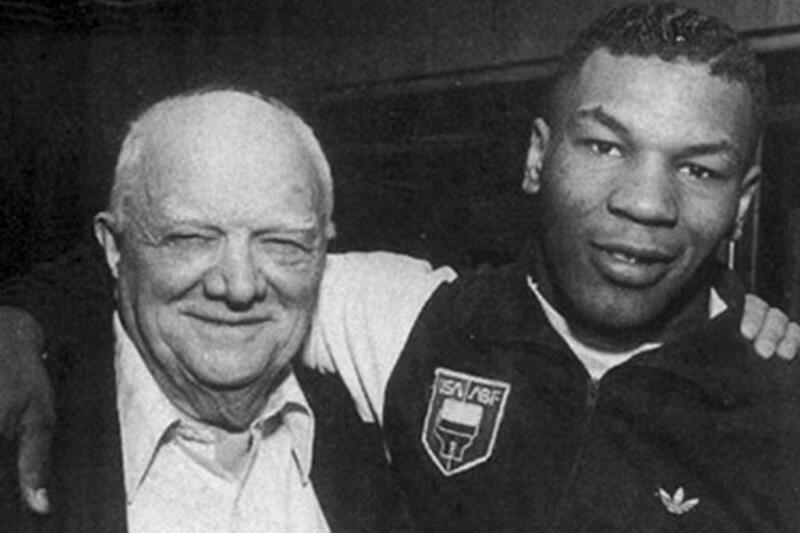I will try to explain why there was an idea to write the second book and what we are assuming this book to be. We are “contemplating” as in fact we cannot state anything exact yet. As you remember from the chapter about the phenomenon of Cus D’Amato in the book “Non-compromised pendulum”, one of the components of the phenomenon of Cus himself – is his origin. Certainly, life and place of origin of his family, later on his life in the Italian quarter of Bronx had a great impact on Cus from psychological and material aspects. These factors influenced his formation, further life and the structure of knowledge that he possessed accordingly. Any psychologist will confirm that such factors have a cornerstone effect on one’s personality.
The very phenomenon of Cus’ origin is rather strange on one hand, and on the other hand there is nothing strange about this. Since D’Amato became a brilliant coach, brought up three world boxing champions, origin of his family from Bari can tell a lot in regard to his phenomenal origin. In fact, this book is going to be a scientific study. This is the reason I am planning to go to Italy, a place where the genus D’Amato had lived. We are going to begin our research work with the archives of Bari – from studying the morals, concepts and life conditions in where his ancestors and parents lived before moving to the United States.
However some things are already known. Bari is the capital of the Apulia region, southeast of Italy. If desired, one may check and ascertain for himself that this is the place of origin, existence and sufficiently long formation of the Neapolitan style of Spanish fencing. In other words, Bari is a place where people settle disputes by means of a blade (in later times – knives, swords, etc.).
I remember the story which I cannot think away, story about the knife duel of Cus D’Amato he was challenged to, when his opponent did not come. I talked to many people in US, including Tom Patti who has confirmed the existence of such a fact. It can be stated with confidence that this case is not a fiction. I also talked with other people who knew D’Amato. All of them have said that there were a lot of strange things in this man. There are also things that none of my interlocutors could not refute nor confirm. Apparently, there was a some kind of a veil, something that knew D’Amato and others did not. Nevertheless, I do not want to mystify D’Amato’s personality or facts from his life. I want to talk about the fact that in the southern Italy there was a Neapolitan style of Spanish fencing until 1844, which rightfully considered by whole Europe to be the best martial art worldwide.
I recommend to pay attention to ancient documents that were translated into Russian at our Research Institute “World Martial Arts and Criminalistic Handling of the Weapon”. Among the documents, pay close attention at the treatise of Nicola Terracusa and Ventura “Genuine Neapolitan Fencing” of 1725, the famous treatise of Senor Francisco Antonio Mattei “Neapolitan Fencing” and the treatise of Blasco Florio, 1844, which actually puts an end point among works on Neapolitan fencing. The treatise “Genuine Neapolitan fencing” contains a lot of facts beneficial for study, the chronology of the maestro of Neapolitan fencing, it has very interesting foreword as well as many facts that require comparative analysis.
I am going to provide several quotes from these documents, which, perhaps, will please you. One of the authors states: “I traveled around all of the Europe, America, I fought with different people in different countries and did not encounter a system equal to Neapolitan fencing.” Moreover, people who dealt with Neapolitan fencing and were authors of these historical documents argue that “Neapolitan fencing is the flower of all nations.” In fact, it is a case of that this system was considered invincible in a certain historical period.
Restoration of Neapolitan fencing, translation into Russian of ancient treatises took quite a long time. I have listed only the main documents that are not difficult to find, translate into a language convenient for you and get acquainted with them.
So, the region where family of Cus D’Amato lived is the place where Neapolitan style of Spanish fencing was born in its time. One whose family comes from such a locality had no way but to inherit this knowledge. We want to find out how much this knowledge subsequently influenced the style of Cus D’Amato. This is precisely the purpose of the scientific expedition to Italy. So far, we do not know what we are going to get in the end, as some facts are already known, and some are not known at all. In fact, we are going to “nowhere” and we do not know the results yet, but we are determined to write honest scientific work. We plan to follow footsteps of his family in the reverse order from USA to Bari, Apulia.
The expeditionary team involves both scientific associates and journalists, specialists in the field of fencing and bare hand fighting. Having assembled such a board, we set a task to ourselves to find out what really influenced the formation of the victorious style of Cus D’Amato.
Additionally, I would like to add a few words about boxing itself. Up to date, I have more than 100 boxing textbooks written during the 17th-19th centuries, 68 of which contain illustrations. If we consider boxing it is strictly divided into three categories in the form of three varieties of guards:
– a straight fencing guard;
– strange guard, which is not very similar to fencing, but also, apparently, has something to do with fencing;
– a guard very similar to the position in the style of Cus. We want to streamline these textbooks on boxing of the XVII-XIX centuries, possibly capturing a certain period of the twentieth century. In fact, I plan to write a separate scientific work later on formation of boxing and the formation of the fist fight itself. I am certain that this material will help us understand how boxing and fencing are related to each other. The fact is that all masters of the XVII, XVIII, XIX centuries believed that boxing originated from fencing, and they openly write about this in their works, which we are going to look into during the expedition.
However, let me remind that our main task is to write an honest book about the origin of the style of Cus D’Amato. In the end, we will get irrefutable evidence regarding the connection between Neapolitan fencing and the style of Cus D’Amato, or recognize the fallacy of the hypothesis and illustrate it with evidence. In the meantime, we are starting our work on the second book, getting prepared for an expedition to Bari, homeland of the D’Amato family. The goal one it is to find the truth and find out what impact had the family environment, heredity, environment on the formation of the style of Cus – the greatest coach who nurtured three world boxing champions.





